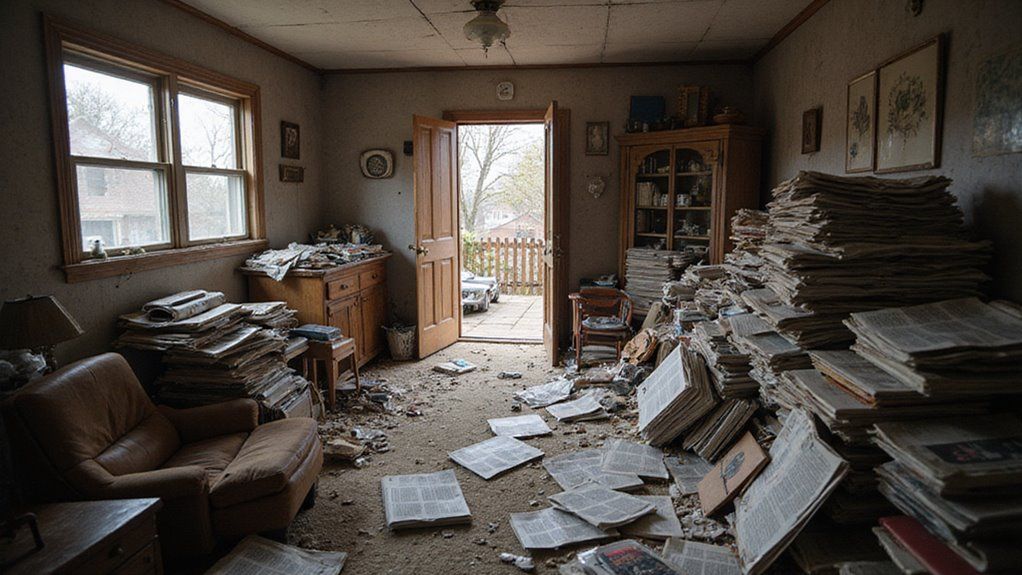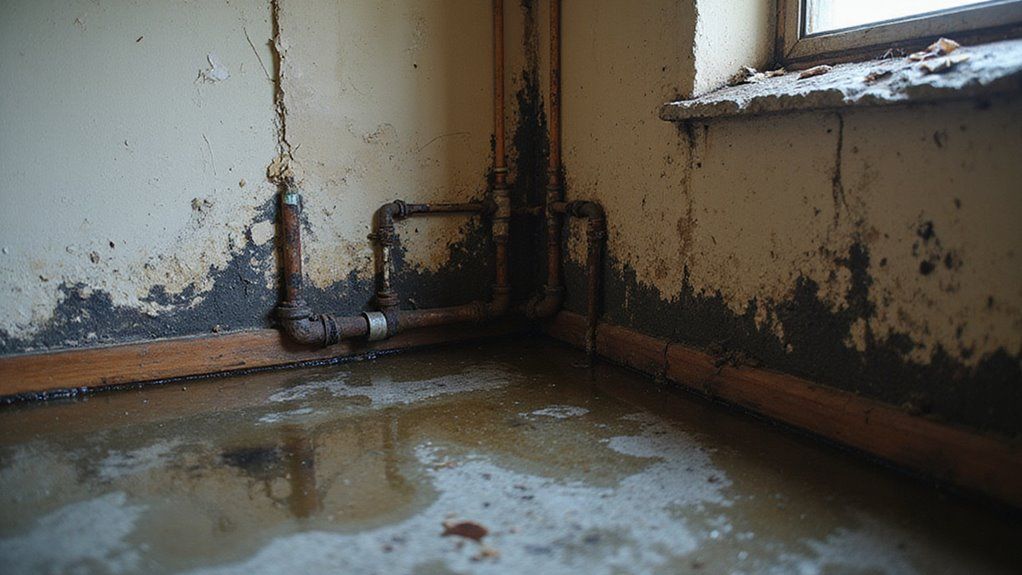How to Sell a House FSBO After an Expired Listing

Selling your house FSBO after your listing expires is tough. Buyers have already seen your home and might wonder why it did not sell. You must overcome their doubts to succeed in your next attempt.
This makes it harder to get attention and trust from buyers. Stale listings can mean fewer showings, lower offers, or no offers at all. Many sellers get stuck and do not know how to move forward.
To sell a house FSBO after an expired listing, you must change your strategy and address the reasons it did not sell.
This means rethinking price, marketing, and presentation to attract new buyers and build confidence. With careful changes, you can turn things around.
This blog will show you clear steps to relist your home, fix mistakes, and close the sale on your terms.
Key Takeaways
- Re-evaluate your home’s price using recent comparable sales and adjust if needed to attract more buyers.
- Improve marketing with professional photos, clear descriptions, and wide exposure on real estate websites and social media.
- Address any issues or repairs that previously discouraged buyers, and highlight improvements in your listing.
- Enhance curb appeal, declutter, and stage the home to maximize its visual appeal for showings and photos.
- Screen buyers by confirming pre-approval or proof of funds, and be prepared to negotiate offers and terms directly.
Understanding Why Your Listing Expired
Your listing expired because your house did not sell within the expected time. If this happens, it is important to find out why. Knowing the reasons can help you do better next time.
You should check if you listed your home during a slow season. Fewer buyers or too many homes for sale can reduce your chances. Market timing plays a big role in selling your house. Reviewing your pricing and marketing strategies can help you determine if your home was positioned attractively for buyers.
Seller motivation is important too. If you were not serious or flexible, buyers may have lost interest. A committed approach helps attract serious buyers.
Look at your marketing and how you showed your home. If you did not highlight the best features, buyers might not notice your listing. Good photos and reaching the right audience are key.
If you analyze these factors, you can improve your next attempt. Adjust your strategy to match the current market. This gives you a better chance of selling your home.
Also, consider whether your house pricing was aligned with what similar homes are selling for, since overpricing can make it harder to attract buyers and may have contributed to your expired listing.
Evaluating Your Home’s Current Market Value
To find your home’s current market value, look at recent sales of similar homes in your area. This step is important before relisting your property. A correct price attracts serious buyers and helps prevent another expired listing.
You should check what similar homes have sold for nearby. If you have made updates or staged your home, include these improvements in your price. Condition and recent changes can add value. If you’re concerned about selling quickly, consider the streamlined and efficient selling process available through cash buyers, which can be beneficial if time is of the essence.
If possible, get a professional appraisal for an unbiased opinion. Do not depend only on online tools, as they can miss local details. Use several sources and compare their results.
If the market changes quickly, keep track of current trends and buyer interest. Check the number of homes for sale in your neighborhood. A careful review of all these factors will help you set a competitive price.
Consider how features like outdated kitchens or recent upgrades impact your home’s appeal and value in the eyes of potential buyers.
Preparing Your Home for a Successful Sale
To sell your home successfully, make it look attractive to buyers. A clean and well-kept house leaves a good impression. Buyers are more likely to be interested if your home looks inviting. Staging your home can help showcase the potential of each room and highlight unique features that set your property apart.
Start with the outside. Mow the lawn, trim hedges, and add flowers or new mulch. A tidy entrance gives a strong first impression.
Inside, remove clutter and personal items. Rearrange furniture to show off the space. Neutral paint colors help buyers picture themselves living there.
Check that all lights work and use natural light when possible. Fix small issues like leaky faucets or chipped paint. Clean carpets, windows, and all surfaces for a spotless look.
If you follow these steps, your home will stand out in the market. A well-prepared home can sell faster and for a better price. Paying attention to neutral colors and furniture will help buyers focus on the potential of the space and make your home more appealing.
Setting the Right Price for FSBO
To set an effective FSBO price, you need to study recent comparable sales in your area and make precise adjustments for current market trends. Analyze how similar homes have sold and weigh factors like inventory, interest rates, and seasonality. Aim for a price that attracts serious buyers while reflecting your home’s true value in today’s market.
When pricing your home, consider consulting local home sellers for insights into what buyers are currently paying and the reputations of active buyers in your area. Additionally, using an accurate home value estimator can give you a solid benchmark to ensure your FSBO price is competitive and data-driven.
Analyzing Recent Comparable Sales
Recent comparable sales help you set the right price for your home. If you analyze these sales, you understand what buyers pay nearby. Accurate pricing attracts buyers and helps you get a fair deal.
Comparable properties should match your home's size, location, and age. You should also consider the home's condition and any upgrades. If you use recent sales from the last six months, your data will be more reliable.
You can review homes sold in your neighborhood for the best comparison. Always check the square footage and any special features. Days on the market may show how desirable your price range is.
Adjusting for Market Trends
Market trends help you set the right FSBO price. You should check local inventory, days on market, and if prices change. This information shows if you need to raise or lower your price.
Active listings and recent pending sales show what buyers want now. Past sales help, but current data is more important. Use this to stay competitive.
If many homes are for sale and selling is slow, consider a lower price. In a seller’s market, you can price higher. Always check trends every few weeks to keep your price up to date.
Pricing for Buyer Appeal
Strategic pricing helps your FSBO home attract buyers in a busy market. The right price gets attention and leads to more showings. If you price too high, buyers may not visit, but too low could mean lost profit.
You should start by researching recent sales in your neighborhood. This gives you a clear idea of what buyers will pay. Include active and withdrawn listings for a complete picture.
Unique features or upgrades in your home may justify a higher price. Adjust your expectations if your property offers something special. Market trends and current demand also affect what you can ask.
Home staging can make your house look its best. A well-staged home may support a higher price point. Smart pricing brings genuine buyers and speeds up your sale.
Creating a Compelling FSBO Listing
A strong FSBO listing gives buyers clear reasons to be interested. Start by listing your home’s best features, such as new appliances or smart technology. Good photos are also important for a strong first impression. Make sure your listing is aligned with market conditions to avoid deterring potential buyers.
Describe the outside of your home, mentioning landscaping or a new paint job. If your home is tidy and staged, buyers can picture themselves living there. Neutral colors and organized rooms help buyers focus on your space.
Use short, direct sentences in your listing. Write a headline that points out your home’s top feature, like “Bright 3-Bedroom with Modern Kitchen.” If you do these things, you can attract more serious buyers quickly.
You can also increase your chances of a successful sale by setting a competitive price based on recent sales of similar homes in your area.
Taking High-Quality Photos and Videos
High-quality photos and videos help sell your home faster. Buyers notice clear and attractive images in a listing. Good visuals can make your home stand out. Making sure your photos accurately represent the home can help differentiate your property from the competition and attract more cash buyers.
Clear, high-quality photos and videos catch buyers’ eyes and help your home stand out in any listing.
Homeowners should tidy up and stage each room before taking pictures. Clean spaces look bigger and more inviting in photos. Furniture should be arranged to show each room’s purpose.
If possible, take exterior photos on a sunny day. The front yard and entrance should look neat and welcoming. Curb appeal attracts more buyers.
Natural light makes rooms appear bright and open. Avoid using harsh indoor lights or shooting in the dark. Photos from the corners of rooms can show more space.
Consider hiring a professional photographer if you can. If not, use a good camera and a tripod for steady shots. Video walkthroughs are helpful if buyers want a virtual tour.
Highlighting your home’s best features with high-quality visuals can help you avoid a lengthy and complicated selling process, especially if you’re trying to attract cash buyers.
Writing Effective Marketing Descriptions
To attract serious buyers, you need to craft marketing descriptions that spotlight your home’s standout features and use persuasive, vivid language. Focus on what sets your property apart, and tailor your message to the specific buyers you want to reach.
Highlighting details such as proper pricing and marketing strategies can help your home stand out from others on the market and encourage more buyer engagement.
By strategically combining these elements, you’ll generate more interest and drive qualified inquiries. Don’t forget to implement effective marketing strategies such as staging your home and utilizing online platforms to maximize your property’s visibility and appeal.
Highlight Unique Property Features
Unique property features make your home stand out in the market. Highlighting these details helps buyers notice your listing quickly. If you point out what makes your home special, there is a better chance to attract serious buyers.
A home with custom cabinetry or special architectural touches can catch attention. Smart home systems and energy-saving upgrades add value and comfort. If these features are present, mention them clearly in your description.
Outdoor living areas or professional landscaping can also set your property apart. Recent renovations, like a new kitchen or bathroom, are important to share. Buyers can picture themselves enjoying these benefits if you describe them well.
Use Compelling Language
A good description helps buyers notice your home and want to visit. Use clear words that show your home’s best features. Focus on details that make your home stand out.
Mention updates like “fresh paint,” “new flooring,” or “modern lighting.” Highlight special features, such as “granite counters” or “stainless appliances.” Describe rooms as “bright,” “spacious,” or “welcoming.”
If the home is in a popular area, say “valued neighborhood with rising prices.” Buyers may see your home as a smart investment. Use facts about the area to show its advantages.
Avoid words like “nice” or “charming.” Instead, describe what makes your home unique. If you use simple and direct language, more buyers may ask for a showing.
Target Buyer Demographics
Understanding buyer demographics helps you market your home to the right people. If you know who is most likely to buy, you can focus your message. This makes your FSBO listing more appealing and effective.
Families often look for homes close to schools and parks. If your home is in a family-friendly area, highlight these features. Mention nearby playgrounds or community centers if they are available.
Urban professionals may value walkability and access to public transit. If your property is near restaurants or nightlife, be sure to mention this. These features can set your home apart for city buyers.
Retirees often prefer quiet neighborhoods and low-maintenance homes. If your home fits this description, note these qualities. Stress any single-story layouts or easy-care yards.
Remote workers and multigenerational households may need extra bedrooms or office space. If your home offers flexible rooms, include this detail. This can appeal to buyers needing more space for work or family.
Advertising Your Home Online and Offline
To sell your home, you need both online and offline advertising. This will help you reach more buyers and get better offers. If you use both methods, you increase your chances of finding serious buyers.
Online marketing starts with good photos and clear descriptions. You should use real estate websites and social media to share your listing. Virtual staging can help buyers imagine living in your home.
Offline marketing is also important. You can use yard signs and hand out flyers in the neighborhood. If you tell local businesses about your sale, they might spread the word.
Open houses can attract many buyers at once. If you schedule these on weekends, more people may attend. A clean and welcoming entryway can leave a good first impression.
If your home has experienced water damage costs, it is important to address this in your marketing strategy, as buyers may be concerned about the condition and value of the property.
Managing Showings and Open Houses Yourself
Managing your own showings and open houses means you control the process. You will need to stay organized and pay attention to details. If you do this well, you can attract more buyers.
Home staging is important to make your house look its best. Clean every room, remove clutter, and highlight the home’s main features. If you want a good impression, make sure each room is bright and tidy.
You can use soft music and light scents to create a welcoming feeling. Prepare simple marketing handouts with home details for visitors. If you plan showings for weekends or evenings, more people may come.
Be ready to answer questions about the house. Guide visitors through each room confidently. If you schedule showings close together, you might create more buyer interest.
Qualifying Potential Buyers
Qualifying potential buyers means making sure they can actually buy your home. Ask each buyer if they have been pre-approved for a mortgage or if they are paying with cash. If they are, ask them to show a pre-approval letter or proof of funds.
This step helps you avoid wasting time on buyers who are not ready to buy. You should know about common loan types such as conventional, FHA, and VA loans. If a buyer will not discuss finances, consider it a warning sign.
If you check each buyer’s finances early, you will focus only on serious buyers. This makes selling your home by owner much smoother. It also helps prevent problems later in the process.
Navigating Offers and Negotiations
Once offers start coming in, you need to evaluate each buyer's proposal for both price and terms. Understand how to craft strong counteroffers that protect your interests without alienating serious buyers. If you receive multiple offers, use a clear comparison strategy to maximize both value and influence.
Evaluating Buyer Proposals
Evaluating buyer proposals means checking each offer carefully before making a decision. You should focus on the buyer’s financing, included documents, and terms. Make sure the proposal matches your needs and timeline.
Start by confirming the buyer has money to buy your property. Proof of funds or a pre-approval letter is required. Offers without proof may not be reliable.
Look at the type of financing the buyer uses. The offer may be cash, conventional, FHA, or VA. Cash offers usually close faster and have less risk.
Check all contingencies in the offer. These may include home inspection, appraisal, or sale of another property. Too many contingencies can slow down or complicate the sale.
Review all legal documents for state and local compliance. If any part of the contract is unclear, ask for clarification. Missing or incorrect paperwork can cause legal issues later.
Assess the amount of earnest money the buyer offers. A larger deposit shows the buyer is serious about purchasing your property. If the deposit is low, the buyer may not be committed.
Counteroffer Strategies Explained
Counteroffer strategies help you get a better deal after reviewing a buyer's proposal. If the first offer does not meet your needs, you can suggest changes. Use counteroffers to adjust terms like price, closing date, or contingencies.
Sellers should clearly state which terms they want to change. Any updates, such as a higher price or fewer seller concessions, should be in writing. Written offers prevent misunderstandings and keep negotiations organized.
If you receive another counteroffer from the buyer, review the terms carefully. You should only agree if the new terms are acceptable to you. If not, it may be best to end negotiations.
Always stay professional and avoid reacting emotionally to counteroffers. Aggressive counteroffers could cause buyers to walk away. Strategic and calm negotiations help both parties reach a fair agreement.
Handling Multiple Offers
When you get more than one offer on your FSBO property, you have more control over the sale. You should carefully compare each offer to choose the best one for your needs. Look beyond just the price to make the right decision.
If an offer has fewer conditions, the sale could go more smoothly. Buyers who have already been pre-approved for a loan are less risky. Offers that fit your moving schedule are easier to work with.
Some buyers may include escalation clauses, which let them outbid others automatically. If you stay calm and focus on facts, you can negotiate better. Emotions should not guide your final choice.
Handling Legal Requirements and Paperwork
Selling your home FSBO means you must handle legal rules and paperwork by yourself. You will need to collect important documents like the deed, old disclosures, and required state or local forms. These papers help make sure your sale follows the law.
A clear purchase agreement is necessary. It should list the price, important dates, and any special conditions. If you miss details, you could face legal problems.
Each state may have special rules or forms. Check your state’s laws to make sure your paperwork is correct. If you are unsure, a real estate lawyer can review your documents.
Staying organized will help your sale go smoothly. Careful paperwork can protect you from future issues. If you keep accurate records, closing day will be easier.
Coordinating Inspections and Appraisals
You need to schedule essential property inspections promptly to keep your sale on track and avoid delays. Prepare for appraisal day by ensuring your home looks its best and all documentation is organized. If inspection findings arise, address them quickly and strategically to maintain buyer confidence and protect your negotiating position.
Scheduling Essential Property Inspections
Essential property inspections must be scheduled once your home is under contract. These inspections are needed to keep the selling process moving. If you delay, the sale could fall through.
Sellers should confirm inspection dates with everyone involved. You must give inspectors and appraisers access to your home. If you cannot be present, arrange for someone you trust to let them in.
Minor repairs should be handled before any inspection. Clean and clear spaces help inspectors work faster. If you keep the home tidy, inspections will go smoothly.
Keep a record of maintenance and upgrades. You may need to show this information to the inspector or appraiser. If you provide these records, it can help answer questions and speed up the process.
Preparing for Appraisal Day
Appraisal Day is important because it helps determine your home’s value for the sale. Schedule the appraisal after you finish main inspections. Make sure your house looks its best before the appraiser visits.
Home staging can help. Remove clutter, take down personal items, and highlight your home’s best features. Clean the entrance, touch up paint, and tidy the yard to improve first impressions.
If you have made upgrades or repairs, prepare a list for the appraiser. Provide information about recent home sales in your area if possible. Keep the house well-lit and easy to access during the visit.
If you prepare carefully, you increase your chances of a higher appraisal. Good preparation sets a strong base for selling your home yourself.
Addressing Inspection Findings
Addressing inspection findings means reviewing the home inspection report and deciding what to fix. Some issues must be addressed before closing. Sellers need to handle these items quickly to avoid delays.
If the report lists safety or lender-required repairs, prioritize those first. Optional repairs can be considered if they help the sale. Sellers should weigh repair costs against possible benefits.
Buyers may ask for repairs, credits, or price changes after the inspection. Sellers should respond promptly and negotiate fairly. If both parties agree, document all terms in writing.
Organized records of all agreements protect both sides. Written documentation prevents misunderstandings later. Staying organized helps keep the sale on track.
Closing the Sale Without an Agent
You can close your home sale without an agent if you follow the right steps. This gives you control over the process and saves money. If you are unsure, you should consider getting professional help for legal matters.
A real estate attorney can draft and review all documents. The attorney makes sure everything follows the law. If you need guidance, the attorney will answer your questions.
You will need to work with the buyer’s lender, title company, and escrow agent. This helps confirm that all paperwork and funds are ready. If any part is missing, the closing could be delayed.
Make sure all repairs from the inspection are finished and documented. A checklist will help you track tasks like preparing the deed and disclosure forms. If you keep organized, you will avoid many common mistakes.
You should schedule a final walkthrough with the buyer. This checks the property’s condition before closing. If the home is not as promised, the buyer may ask for repairs.
If you stay proactive and communicate clearly, you can close your sale smoothly. You will reduce risks and complete your FSBO sale successfully.
Conclusion
If you choose to sell your house FSBO after an expired listing, you can take control of the process. Careful planning, correct pricing, and strong marketing are essential for success. If you follow these steps, you can increase your chances of selling quickly.
If you want to sell fast without the hassle, we buy houses for cash. Jay Primrose Properties can offer a simple and convenient solution. If you prefer a smooth transaction, working with us can save you time and effort.
If you are ready to sell, we encourage you to reach out to Jay Primrose Properties today. We are here to help you move forward confidently. Let us show you how easy selling your home can be.
Give us a call anytime at 253-697-0007 or fill out this quick form to get started today!
Get A Fair Cash Offer On Your House

About the author
Justin Baker
Justin Baker is the founder of Jay Primrose Properties, a leading cash home buying company based in Tacoma, WA. With a passion for real estate investing, Justin has helped numerous homeowners in the Pacific Northwest region sell their homes quickly and hassle-free. Justin believes that buying and selling real estate should be a seamless process and works tirelessly to ensure that his clients have a stress-free experience. With a deep understanding of the local real estate market and a commitment to exceptional customer service, Justin has established himself as a trusted and reliable cash home buyer in Tacoma and the surrounding areas.











